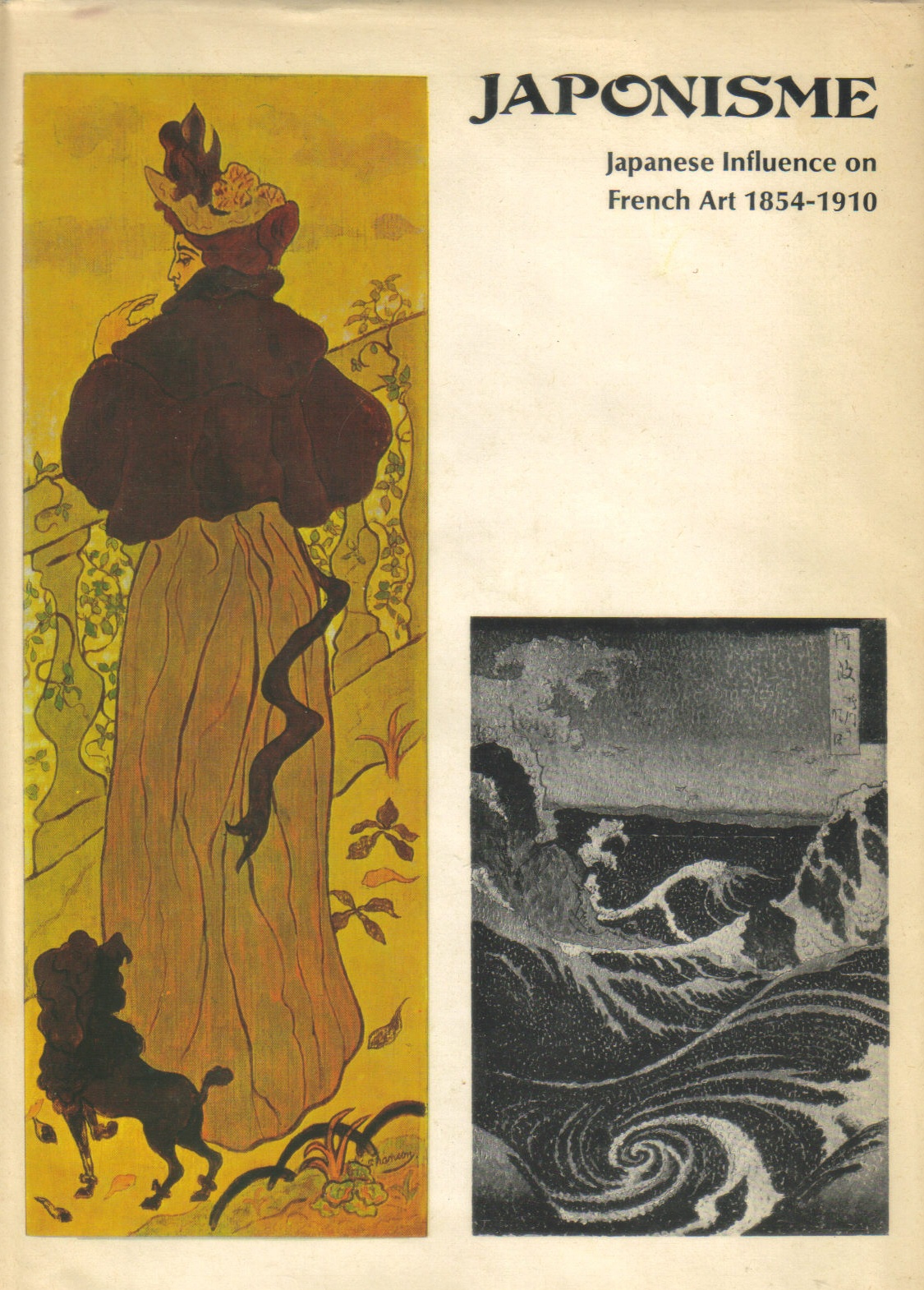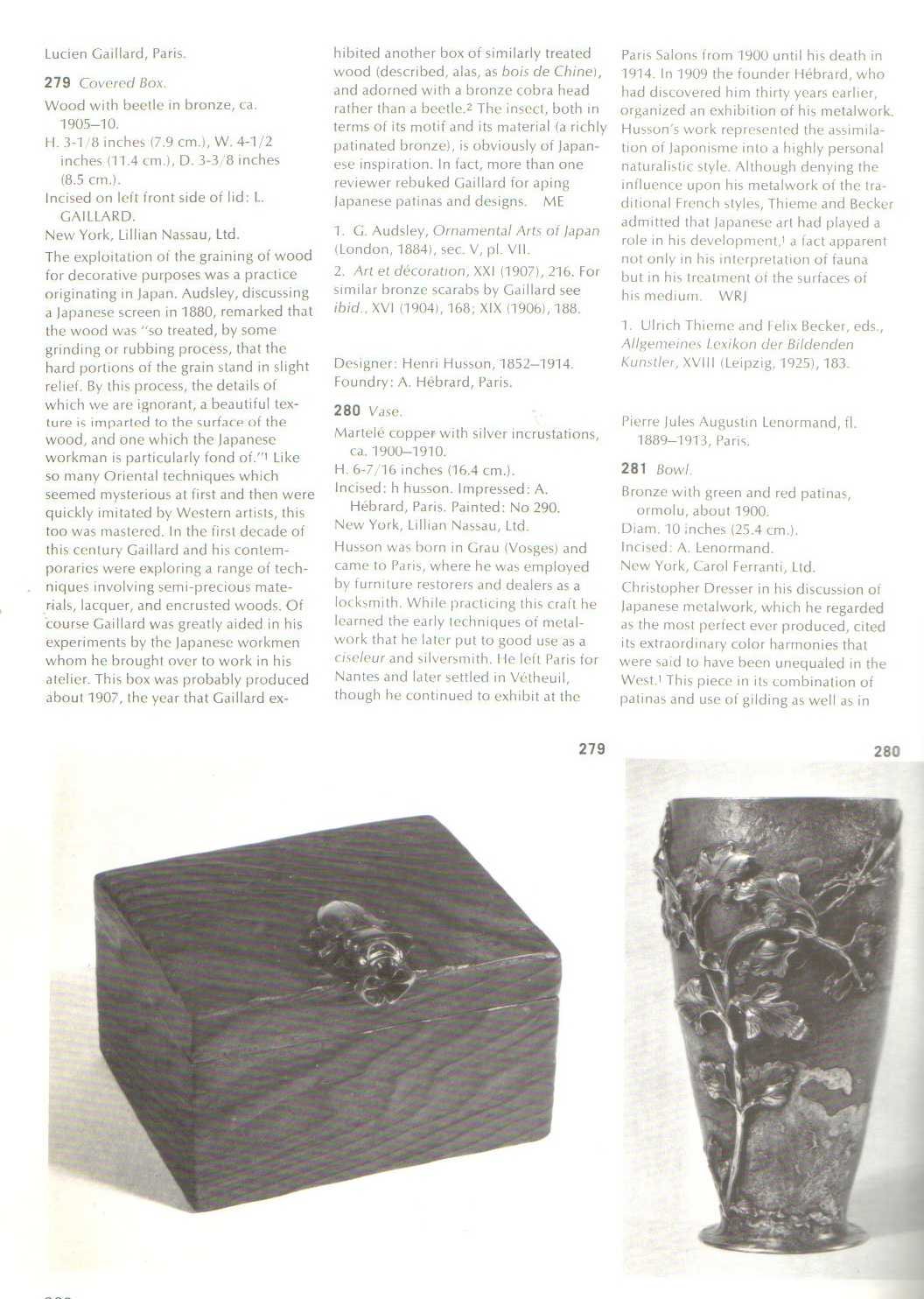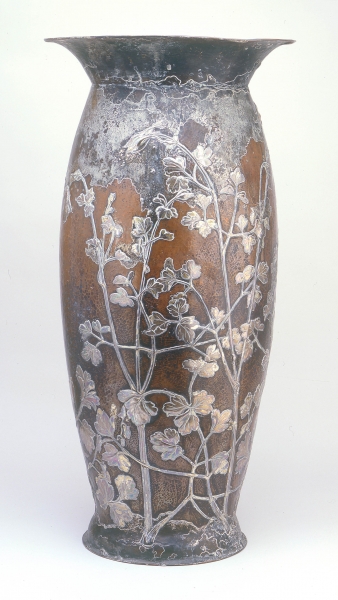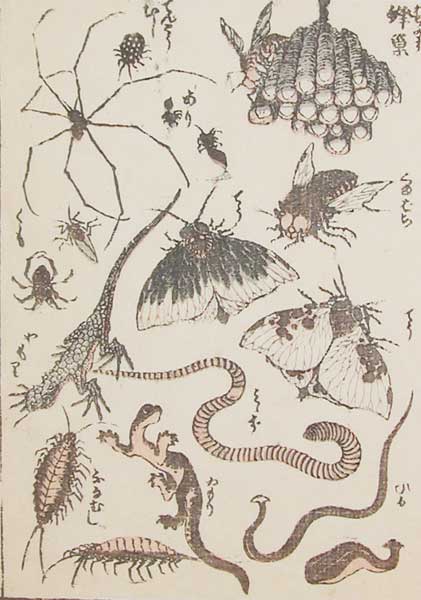A Martelé Copper and Applied Silver Vase
By Henri Husson, circa 1900
Depicting foliage and a fly against a textured copper and silver ground, inscribed h husson and stamped A. HEBRARD PARIS, further stamped with a monogram and with painted exhibition number 290
6 ½ in (16.5 cm) high
Provenance
Lillian Nassau Ltd, New York
Exhibited
Japonisme: Japanese Influence on French Art 1854-1910, The Cleveland Museum of Art, 1975
Literature
Japonisme: Japanese Influence on French Art 1854-1910, exh. cat., 1975, p.202, no.280
6 ½ in (16.5 cm) high
Provenance
Lillian Nassau Ltd, New York
Exhibited
Japonisme: Japanese Influence on French Art 1854-1910, The Cleveland Museum of Art, 1975
Literature
Japonisme: Japanese Influence on French Art 1854-1910, exh. cat., 1975, p.202, no.280
Henri Husson was born in Grau (Vosges) and came to Paris, where he was employed by furniture restorers and dealers as a locksmith. While practising this craft, he learned techniques of metalwork that he later put to good use as a ciseleur and silversmith. Husson left Paris for Nantes and later settled in Vétheuil, though he continued to exhibit at the Paris Salons from 1900 until his death in 1914.
In 1909 the founder Hébrard, who had discovered him 30 years earlier, organised an exhibition of metalwork. Husson's work represented the assimilation of Japonisme into a highly personal naturalistic style. Although denying the influence upon his metalwork of the traditional French styles, the biographer Thieme-Becker admitted that Japanese art had played a role in his development, a fact apparent not only in his interpretation of fauna but in his treatment of the surfaces of his medium.
A vase of similar design is held in the collections of the Petit Palais. Other works by Henri Husson are held in the Metropolitan Museum of Art, the Musée d'Orsay and the Musée des Arts Décoratifs.
In 1909 the founder Hébrard, who had discovered him 30 years earlier, organised an exhibition of metalwork. Husson's work represented the assimilation of Japonisme into a highly personal naturalistic style. Although denying the influence upon his metalwork of the traditional French styles, the biographer Thieme-Becker admitted that Japanese art had played a role in his development, a fact apparent not only in his interpretation of fauna but in his treatment of the surfaces of his medium.
A vase of similar design is held in the collections of the Petit Palais. Other works by Henri Husson are held in the Metropolitan Museum of Art, the Musée d'Orsay and the Musée des Arts Décoratifs.




















